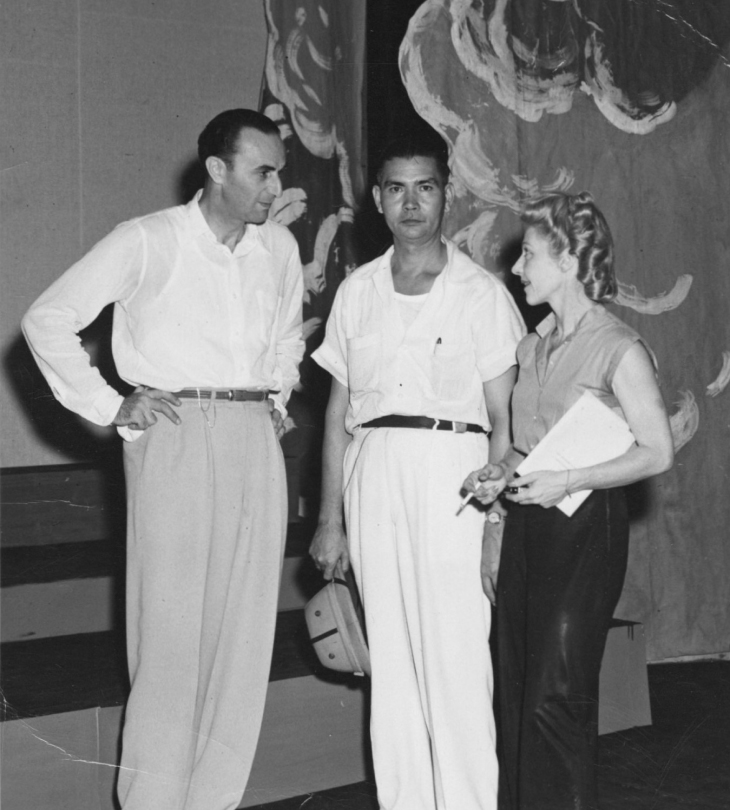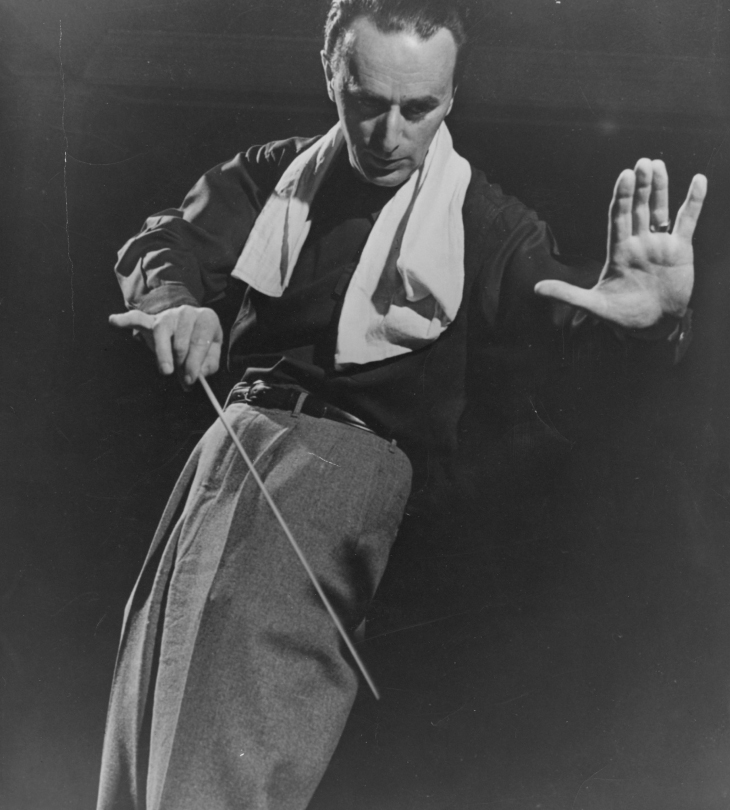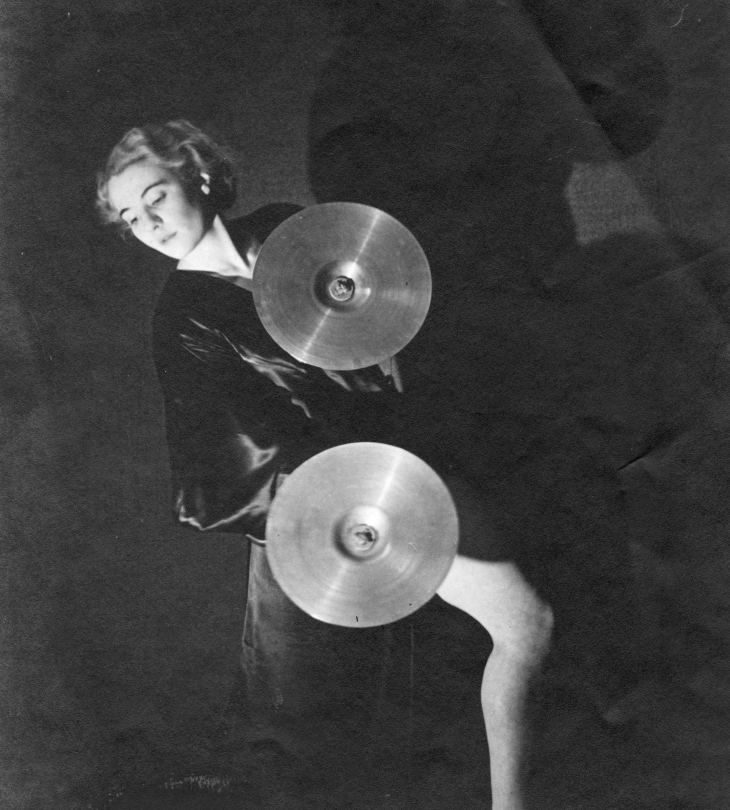About

The Herbert and Trudl Zipper Archives
The Herbert and Trudl Zipper Archives consists of materials documenting the lives and careers of conductor, composer, arts education advocate, and Holocaust survivor Herbert Zipper (1904-1997) and dancer, choreographer, artist, and arts education advocate Trudl Dubsky Zipper (1913-1976). The archives include papers, music, photographs, scrapbooks, audio and visual materials, artworks, posters, objects, and books. Most of the materials consist of the Zipper’s personal collection, but also include materials collected by Dr. Paul Cummins (author and friend and biographer of Dr. Zipper) and Crossroads School.
The archives were originally bequeathed to Crossroads School by Dr. Zipper and retrieved by Dr. Cummins after Dr. Zipper’s death in April 1997. They were then donated to the Colburn School in 2019 from Crossroads School.
In 2022, the Colburn School was awarded a “Save America’s Treasures” grant, to preserve and make the archives accessible, by the National Park Service (NPS) in partnership with the National Endowment for the Arts, the National Endowment for the Humanities, and the Institute for Museum and Library Services. A generous donor’s match of the grant funding also made this important project possible.

1904–1997
Dr. Herbert Zipper
Herbert Julius Zipper, born in Vienna, Austria, on April 27, 1904, was a conductor, composer, and teacher with a distinguished career and a lifelong dedication to musical education. Dr. Zipper received an extensive musical education at the University of Music and Performing Arts in Vienna where he studied under Richard Strauss, Maurice Ravel, Joseph Marx, and others. After shifting gears from attempting to be a concert pianist to a conductor, on the recommendation of Strauss, Dr. Zipper found early success as a conductor in Russia, Germany, and Austria where he was connected to the Vienna Ballet from 1927 to 1930. On occasion, Dr. Zipper accompanied the Bodenwieser Ensembles’ dance performances on the piano where he would make his acquaintance with a dancer in the group and future wife, Trudl Dubksy.
Dr. Zipper was active in the Viennese coffeehouse cabaret scene, composing music for skits that were typically political and he went by the alias, Walter Drix. It was there he met the poet, Jura Soyfer, who he later was imprisoned with in 1938 in Dachau and Buchenwald. While imprisoned in Dachau, Dr. Zipper and Soyfer wrote “Dachau Song,” an anthem of resistance that they taught to fellow prisoners. Dr. Zipper also conducted a secret orchestra in Dachau which held performances in an out-of-the way outhouse. In September 1938, Dr. Zipper was transferred to Buchenwald and eventually gained his release on February 20, 1939, after months of hardship. Dr. Zipper briefly reunited with his family in Paris before he sailed to join Trudl Dubsky in the Philippines. The death of fellow Viennese conductor, Alexander Lippay, who had been the Manila Symphony Orchestra’s conductor, opened the door for Dr. Zipper to assume the role in 1939. Shortly thereafter, Herbert and Trudl Zipper were married on October 1, 1939.
When World War II came to the Philippines, Dr. Zipper was once again imprisoned during the Imperial Japanese occupation. Upon his release Dr. Zipper was active in the resistance; refusing to conduct the symphony for the occupying Japanese Army while also relaying valuable information to Allied Headquarters. In a devastated Manila after the war, Dr. Zipper’s conviction that music was vital to the human spirit led him to organize a series of public concerts for the public and U.S. Army in May 1945. The first using the bombed-out Santa Cruz Church as a venue to perform Dvořák’s “New World Symphony” and Beethoven’s “Eroica.” The Zippers’ connection to the Philippines remained strong after departing in 1946. Each summer starting in 1951, the Zippers would return to preside over the Manila Symphony Orchestra and Ballet Moderne’s summer programs.
The Zippers immigrated to the United States of America in 1946. Dr. Zipper accepted the challenge of reviving the Brooklyn Symphony Orchestra while also conducting free concerts to public school children, and teaching at the New School of Social Science. Dr. Zipper met and collaborated with poet Langston Hughes and conducted Hughes’ opera “The Barrier.” In 1953, the Zippers moved to Chicago, where Dr. Zipper became Director of the Music Center of the North Shore, served various roles in the National Guild of Community Music Schools, and conducted the Chicago Businessmen’s Orchestra. Dr. Zipper and the Music Center’s Orchestra became well known for their performances in various elementary schools around the Chicago area. In his role as President and later as Executive Director of the National Guild of Community Music Schools, Dr. Zipper established community music schools across the United States and presided over numerous special projects like bringing music education to rural Arkansas.
In 1972, the Zippers moved to Los Angeles, California, where Dr. Zipper worked for the University of Southern California (USC) and became involved in a numerous music-related initiatives, including USC’s Community School of the Performing Arts. After significantly growing the program, Dr. Zipper feared for the school’s sustainability. To ensure its survival, he approached a close friend, Richard D. Colburn, and encouraged him to acquire the school and establish it as an independent community school. The acquisition was finalized on August 26, 1980, and laid the groundwork for the Colburn School. After his retirement from USC, Dr. Zipper travelled to various countries in Asia where he continued teaching, conducting, and promoting music education. Dr. Zipper’s extraordinary life inspired an Oscar nominated documentary film titled “Never Give Up.” Dr. Herbert Zipper died on April 21, 1997 in Santa Monica, California.

1913–1976
Trudl Dubsky Zipper
Gertruda “Trudl” Dubsky born in Vienna, Austria, on January 31, 1913, was a talented international dancer, choreographer, costume designer, artist, and teacher. In 1922, Dubsky began her formal training as a dancer at the University of Music and Performing Arts in Vienna with Professor Gertrud Bodenwieser. Dubsky’s talent caught Bodenwieser’s eye, leading Dubsky to join her professor’s dance ensemble in 1925. Dubsky gained immediate recognition for her dynamic modern dancing and high acrobatic leaps. At the young age of 16, Dubsky performed a solo with the Vienna Symphony Orchestra at the Imperial Palace. In 1932 she joined with fellow Bodenwieser dancer, Jeannette Rutherston, to establish the Rutherston-Dubsky School of Dance in London and was well received by British audiences for her performances at venues like Rudolf Steiner Hall and Prince’s Hall. In the late 1920s, Dubsky formed a professional and personal relationship with the musician and conductor Herbert Zipper. Zipper would often accompany Dubsky’s performances on the piano, a sign of their artistic collaboration to come.
In 1937, Dubsky was invited to the Philippines to teach dance at the University of the Philippines. In addition to her duties at the University, Dubsky taught ballet/other forms of dance at the Kaethe Hauser School of Creative Dancing, and choreographed/performed in numerous recitals and ballets. Perhaps most importantly, Dubsky founded the Manila Ballet Moderne, a professional modern ballet that performed regularly for the people of Manila. Originally, Dubsky only planned to stay in the Philippines for six months, but Hitler’s invasion of Austria forced her to extend her stay. In 1939, Dr. Herbert Zipper joined her in the Philippines when he was invited to assume the role of Conductor of the Manila Symphony Orchestra. Herbert and Trudl Zipper were married in Manila on October 1, 1939. Trudl was also a talented artist. Her watercolor paintings of Manila during the Imperial Japanese occupation during World War Two were published in Life Magazine, and later as a book of her collected works: Manila 1944-45: As Trudl Saw It.
Even after the Zippers left Manila for Brooklyn, they would return every summer during the 1950s and 1960s to lead the Manila Symphony Orchestra and Manila Ballet Moderne’s summer programs. Their crowning achievement coming in 1956 when the two organizations collaborated to perform Georges Bizet’s Carmen in the national language of the Philippines, Tagalog.
Trudl continued as a teacher and choreographer throughout her life. In New York, she was invited by actor/producer Erwin Piscator to teach in his workshop at the New School of Social Science’s Dramatic Workshop. After their time in Brooklyn the Zippers arrived in Chicago where Trudl taught at the Chicago Conservatory of Music and the Music Center of the North Shore. Herbert and Trudl then moved to Los Angeles where Trudl taught at the University of Southern California. Trudl Dubsky Zipper died on July 3, 1976 in Santa Monica, California. In 2008, the Colburn School’s Dance Institute was named the Trudl Zipper Dance in her honor.